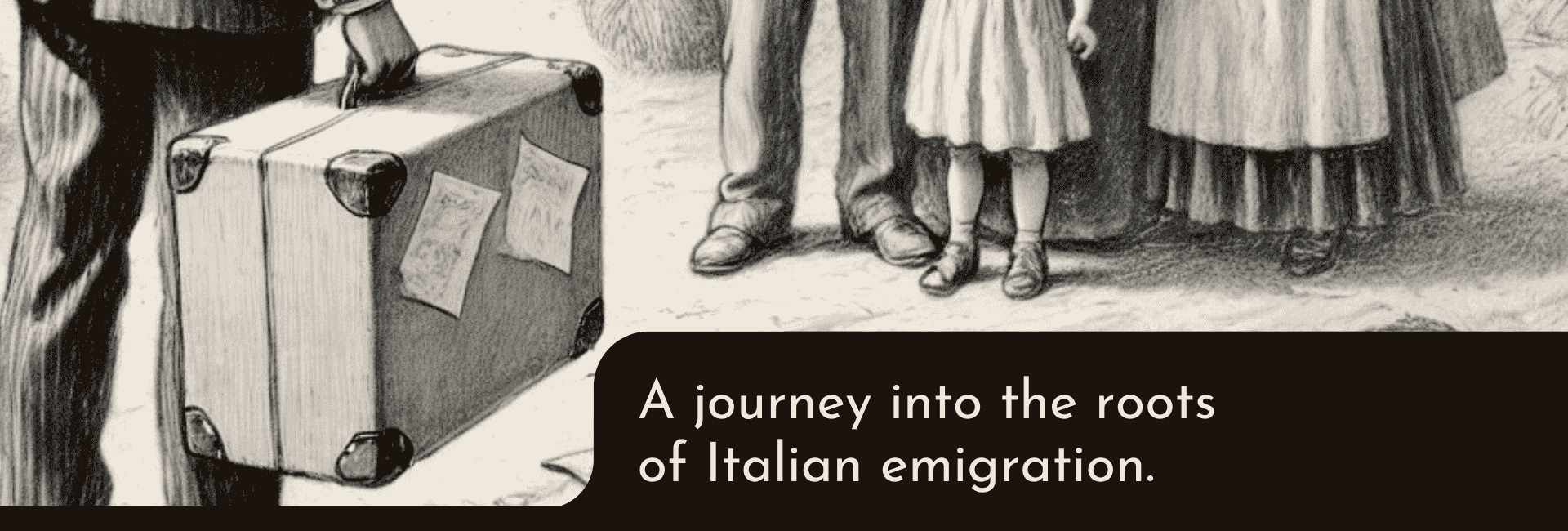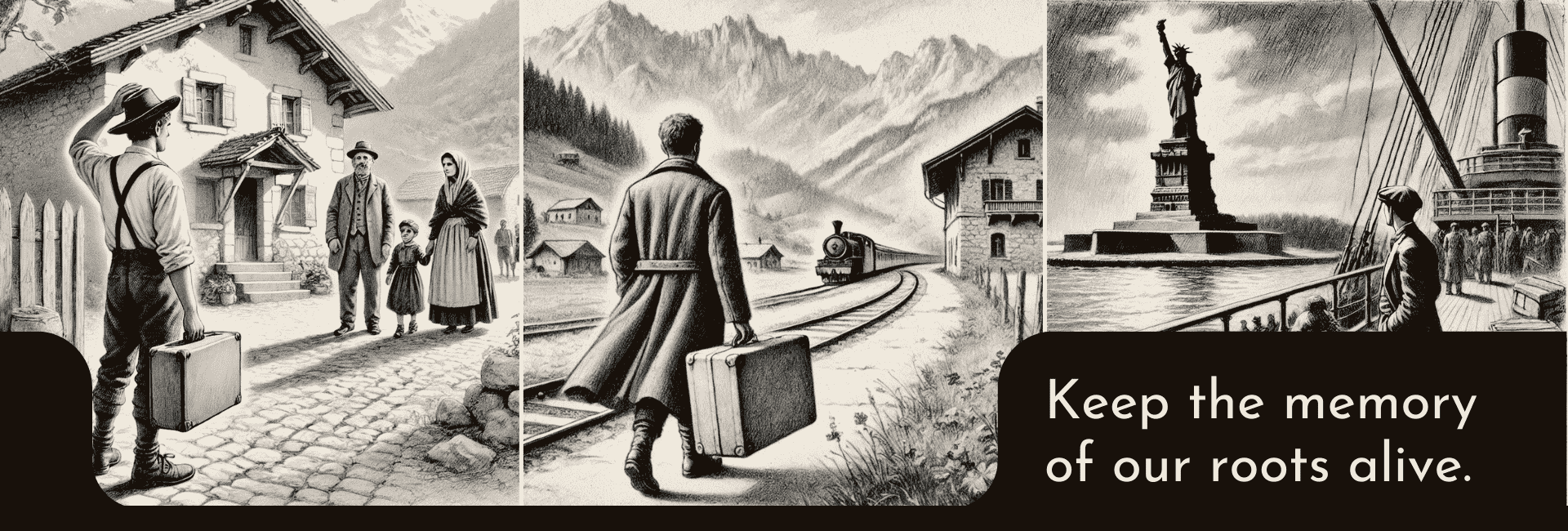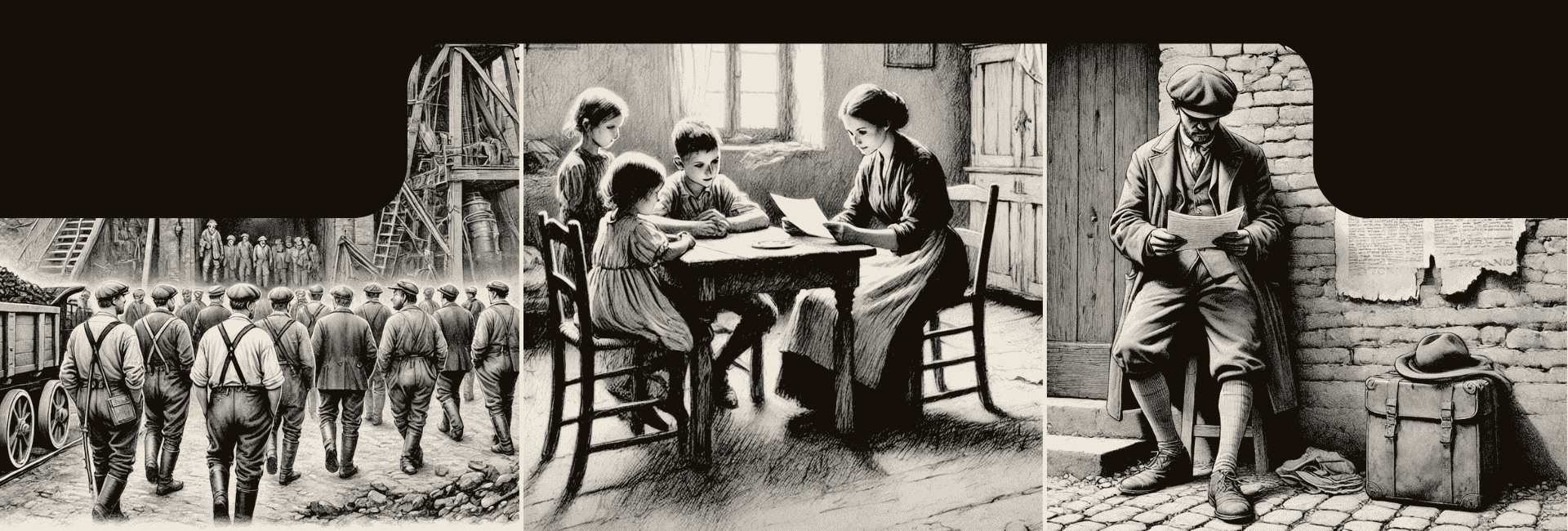
Discover the project of the Municipality of Recoaro Terme
Join us in preserving the memory of Italian emigration and follow the story of our roots.

Between 1876 and 1925, over 15 million Italians decided to seek their fortune in the United States and Canada, creating large Italian communities, particularly in North American cities. While the majority of emigrants came from Southern Italy, the Central and Northern regions also made a significant contribution to this phenomenon. Venetians, along with Ligurians, Lombards, Emilians, Marchigians, Tuscans, and Piedmontese, constituted a significant portion of the migratory wave towards the Americas, particularly towards large cities like New York and Buenos Aires, and some European countries, especially France, after World War I.
The period between 1926 and 1929 and World War II marked a slowdown in emigration, but it resumed rapidly after the conflict.
Between 1946 and 1973, around 6.5 million Italians emigrated, primarily to France, Germany, Belgium, Switzerland, and England.
In totale, tra il 1876 e il 1973, oltre 26 milioni di italiani emigrarono lasciando la loro patria alla ricerca di una vita migliore.
The project “La nostra storia altrove” aims to explore these dynamics, connecting the descendants of Italian emigrants to their roots, telling stories of resilience and hope, and preserving the memory of a phenomenon that deeply marked the history of our country.
When to stay was no longer an option…
This journey into the past helps us understand the reasons that drove millions of Italians to leave their homeland, their hopes, the challenges they had to face, and their impact on Italian and foreign societies.
Through an in-depth analysis of the causes of emigration, such as agricultural crises, taxation, and lack of opportunities, the project reveals how the decision to leave was often driven by economic and social necessity.
Emigration was not merely an escape from poverty but also an act of courage and hope for a better future.
We will examine how family and social networks facilitated migration, creating self-sustaining migratory chains. We will also explore the significant role played by remittances in supporting families left behind in Italy.
The project will delve into the various forms of emigration, from permanent departures to seasonal migrations, such as those of the “Rondinelle“. Furthermore, we will investigate how the cultural heritage of historical groups, like the Cimbri, may have influenced the mindset of emigrants and their decisions to migrate.

The 9 Key Points of the Project
![]()
Municipal Library
Via Roma 17 Recoaro Terme
01. Emigration: a complex and multifaceted phenomenon
Italian emigration is one of the largest migratory phenomena in modern history, involving over 25 million people between the 19th and 20th centuries.
![]()
Neustadt Bridge
Between Via Roma and the Park "V. Trettenero", Recoaro Terme
02. Who emigrated and why?
Farmers, laborers, and artisans left Italy to escape poverty, agricultural crises, and lack of opportunities, often driven by necessity and hope for a better future.
![]()
Virgilio Trettenero Monument
Park "V. Trettenero" entrance, Recoaro Terme
03. The burden of taxes and the economic crisis
Excessive taxation, like the corn mill tax, and the collapse of agricultural prices forced many Italians to emigrate.
![]()
Recoaro Terme Municipality
Via Roma 10, Recoaro Terme
04. The impact on Italy
Emigration left rural areas depopulated, intensified economic dependence on remittances, and caused significant cultural losses in the communities of origin.
![]()
U. Floriani School
Via Maestro E. Pozza, Recoaro Terme
05.
(currently under development)
![]()
War Memorial
Piazza Dolomiti, Recoaro Terme
06. Remittances: insufficient help
While remittances provided vital financial support to families, they could not reverse the economic decline of local communities.
![]()
Piazza Dolomiti
Piazza Dolomiti, Recoaro Terme
07. The Rondinelle: a unique migration model
Seasonal migrants, known as Rondinelle (swallows), represent a unique form of migration, combining economic survival with a strong connection to their homeland.
![]()
Historical Nativity Scene
Recoaro Terme Church
08. A people on the move: the Cimbri
The history of the Cimbri people, an ancient migratory group settled in northern Italy, reflects the resilience and adaptability of emigrant communities.
![]()
Statue of the Risen Christ
Recoaro Terme Cemetery
09. The legacy of Italian emigration
Italian emigration leaves a legacy of resilience, cultural enrichment, and global connections that continue to shape our identity today.
